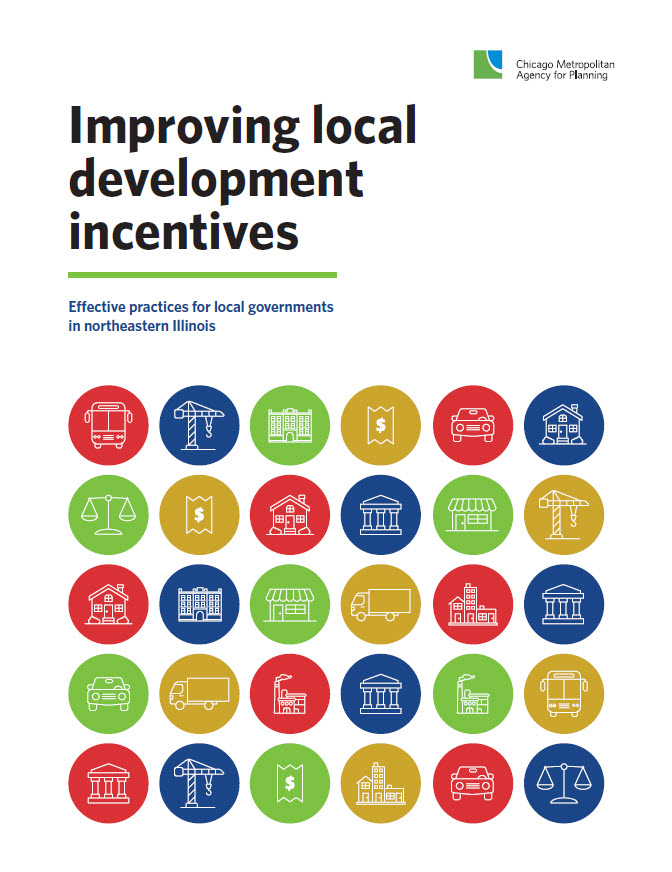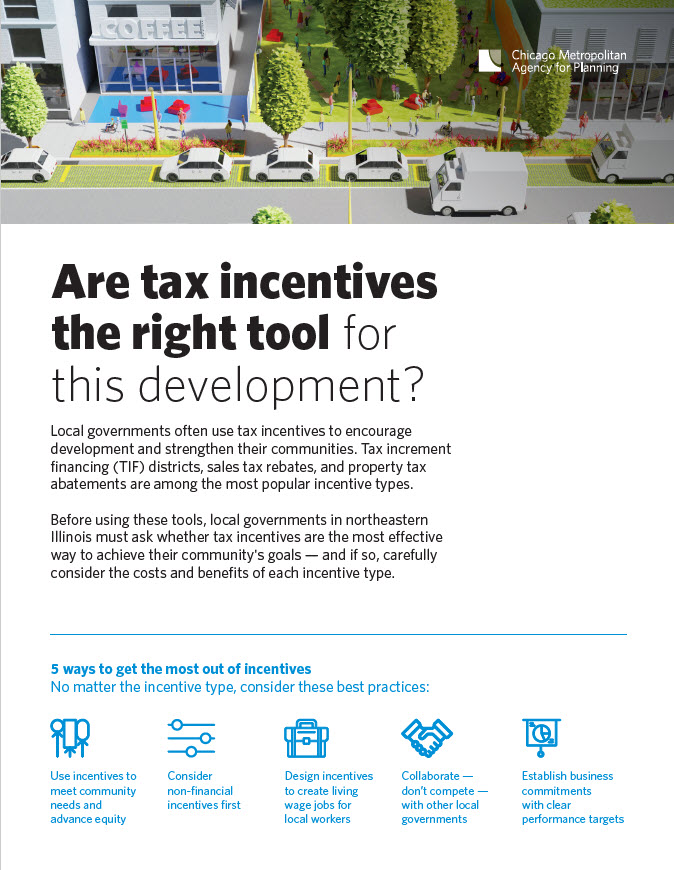Local governments use many types of incentives to encourage development. Incentives fall into two general categories: financial tools such as tax incentives, and non-financial tools like job training, streamlined development review, and entrepreneurial supports.
Tax incentives used regularly in northeastern Illinois include tax increment financing (TIF), sales tax rebates, business district tax rebates, property tax abatements, and Cook County property tax incentive classifications. A 2022 CMAP report found that over 75 percent of the region’s municipalities use some type of tax incentive.
There can be drawbacks to local development tax incentives, including high costs, diminishing returns, heightened intraregional competition, and inequitable outcomes. These limitations can make incentives less effective in achieving local and regional goals.
To enhance the economic and fiscal position of the region, ON TO 2050 calls for local governments to reform their use of development incentives within a larger program of smart, regional economic development.
CMAP supports incentive reform by developing policy recommendations that encourage equity, transparency, fiscal sustainability, and non-financial incentives. CMAP also analyzes the most common types of tax incentives used in northeastern Illinois.


